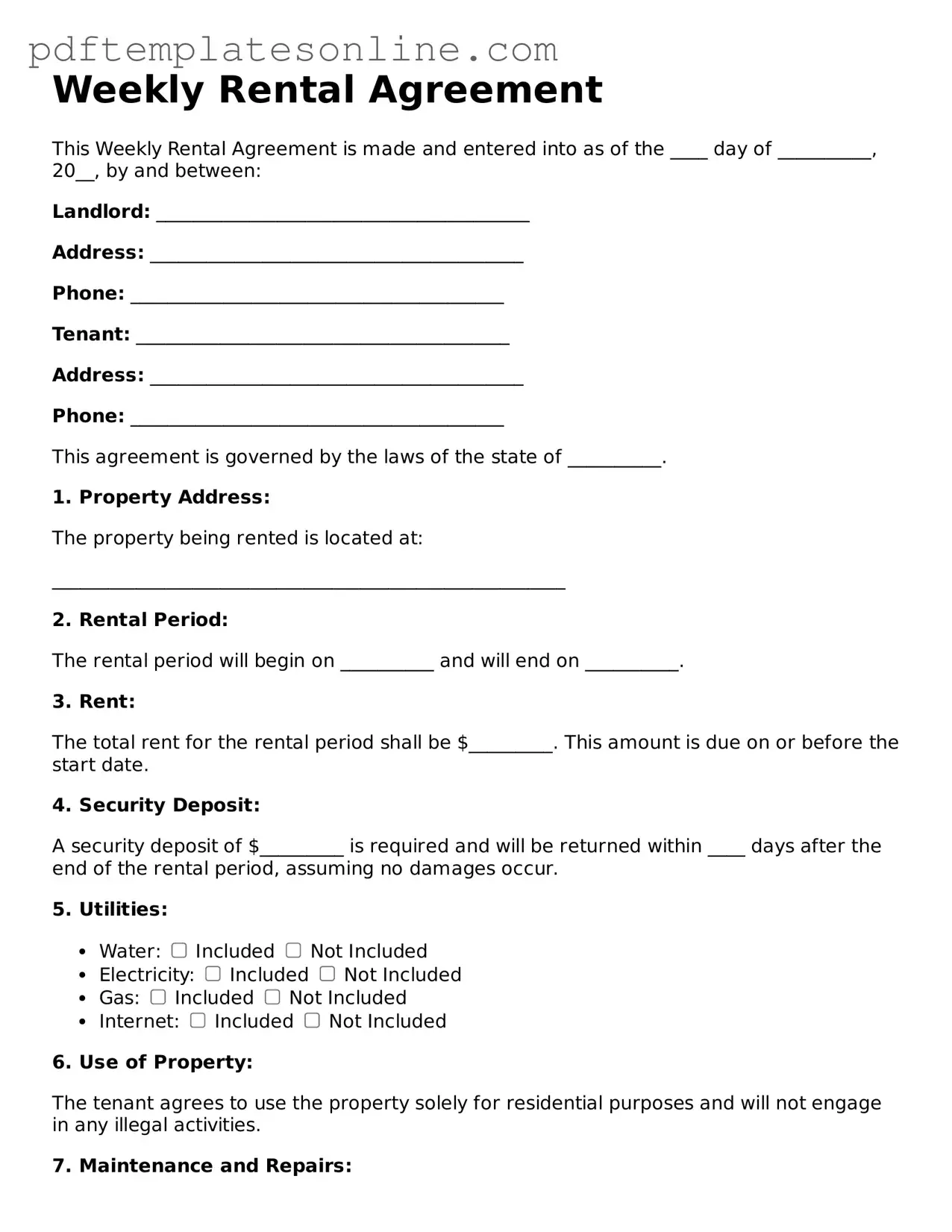Filling out a Weekly Rental Agreement form can seem straightforward, but many people make common mistakes that can lead to complications down the line. Awareness of these pitfalls is essential for ensuring a smooth rental experience.
One frequent error is failing to provide accurate personal information. Whether it’s a misspelled name or an incorrect phone number, these inaccuracies can create communication issues. Double-checking all personal details is crucial.
Another mistake involves overlooking the rental property address. It is vital to ensure that the address is complete and correct. An incomplete address can lead to confusion about where the rental agreement applies.
Many individuals also neglect to read the terms and conditions carefully. Skimming through the fine print may result in misunderstandings about responsibilities and obligations. Take the time to understand what you are agreeing to before signing.
Some people forget to include the rental period. Clearly stating the start and end dates of the rental is essential. Without this information, both parties may have different expectations about the duration of the rental.
Another common mistake is not specifying the rental amount. Clearly stating the weekly rental rate helps avoid disputes later. Ensure that this figure is accurate and aligns with any prior discussions.
In addition, failing to sign and date the agreement is a significant oversight. An unsigned agreement is not legally binding. Make sure to review the document one last time before signing.
People often forget to include any additional fees or deposits. If there are extra costs associated with the rental, they should be clearly outlined in the agreement. This transparency helps build trust between the landlord and tenant.
Some individuals do not keep a copy of the signed agreement for their records. Having a copy is essential for reference and can be invaluable in case of disputes. Always request a copy once the agreement is finalized.
Lastly, many overlook the importance of providing emergency contact information. This detail is often crucial for landlords in case of urgent issues related to the property. Including a reliable contact can facilitate quick resolutions.
By being mindful of these common mistakes, individuals can ensure that their Weekly Rental Agreement is filled out correctly, leading to a more positive rental experience.
